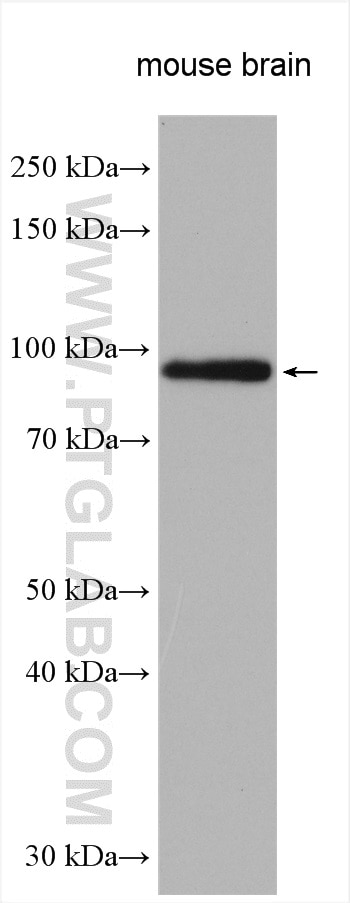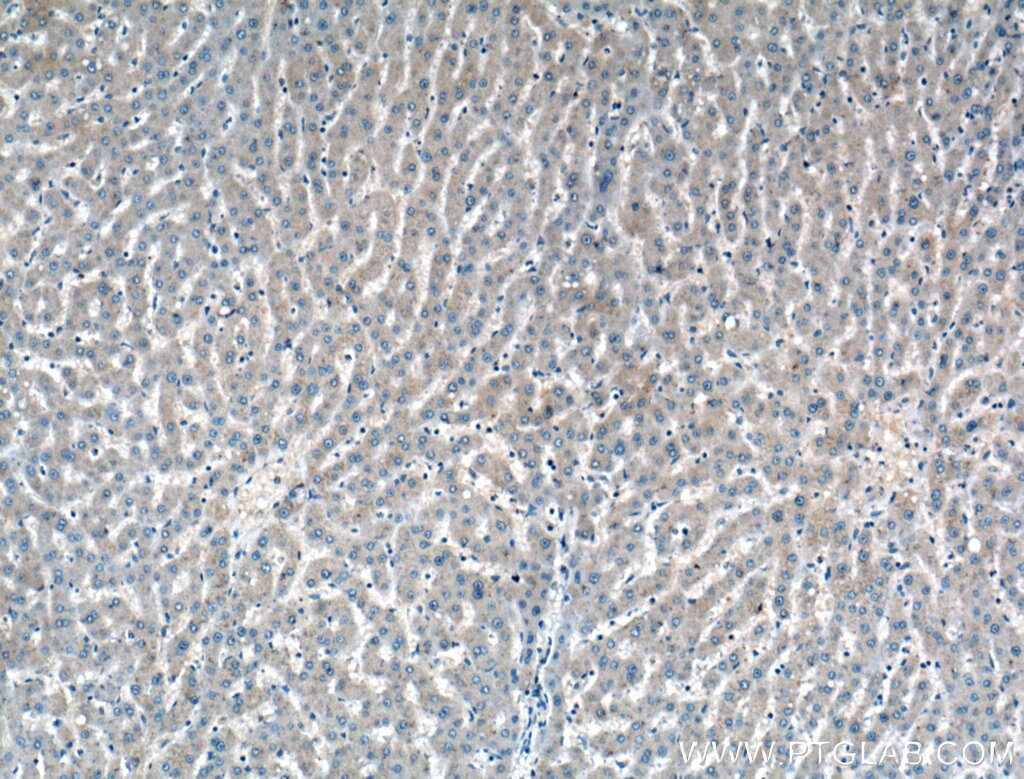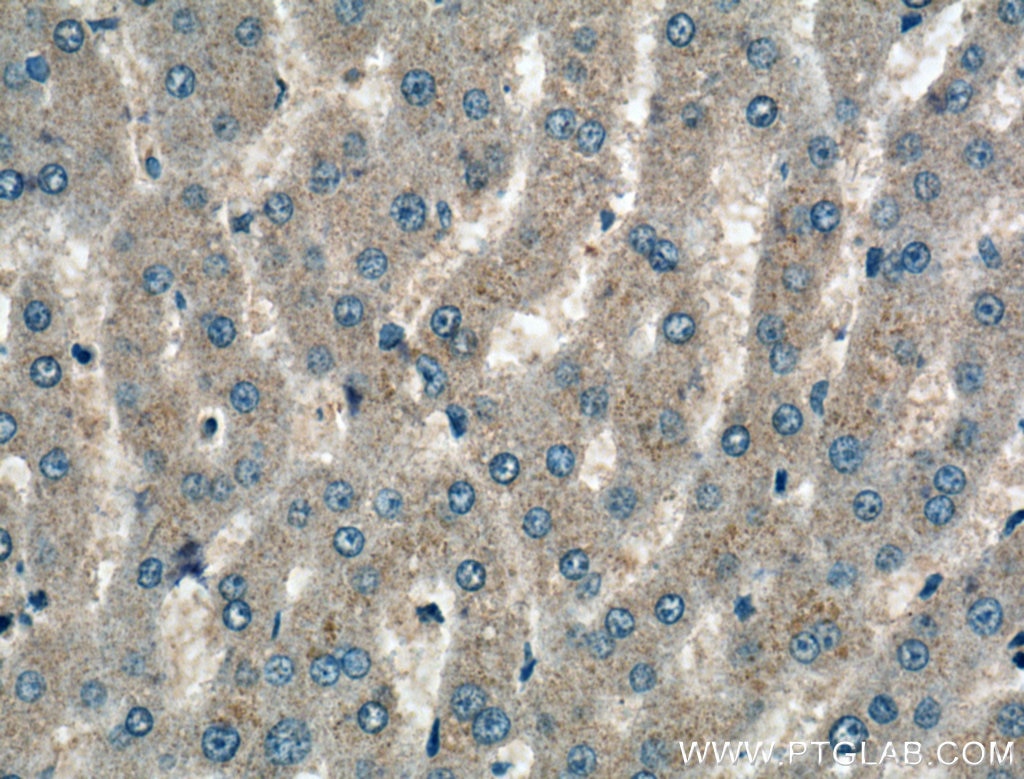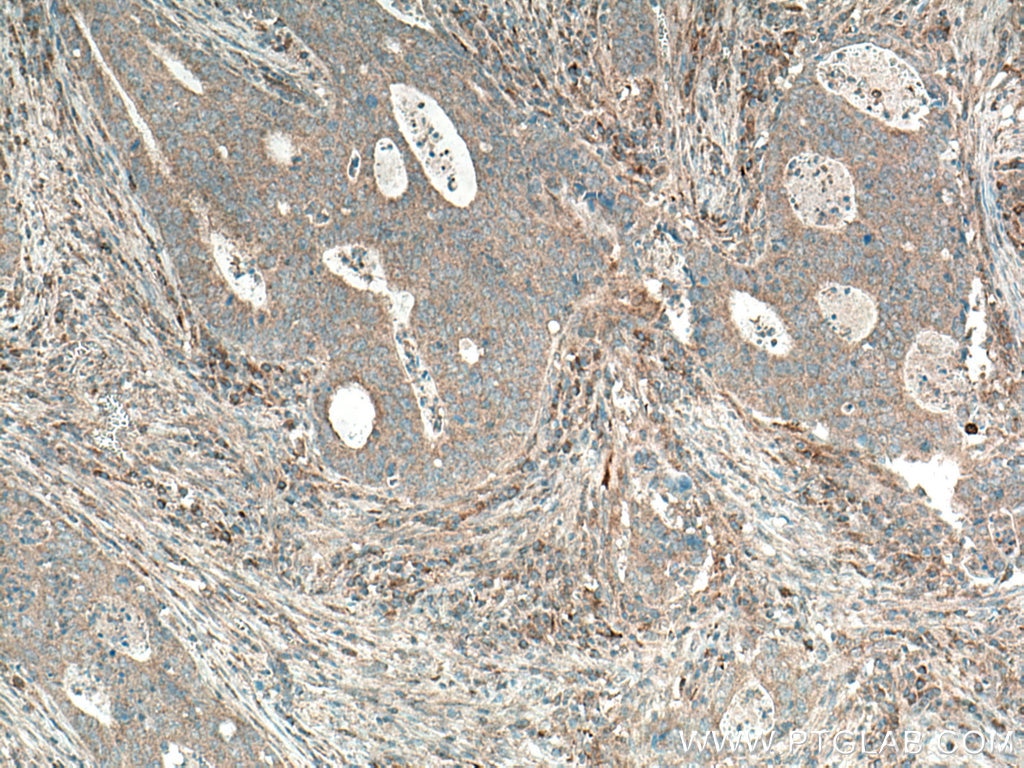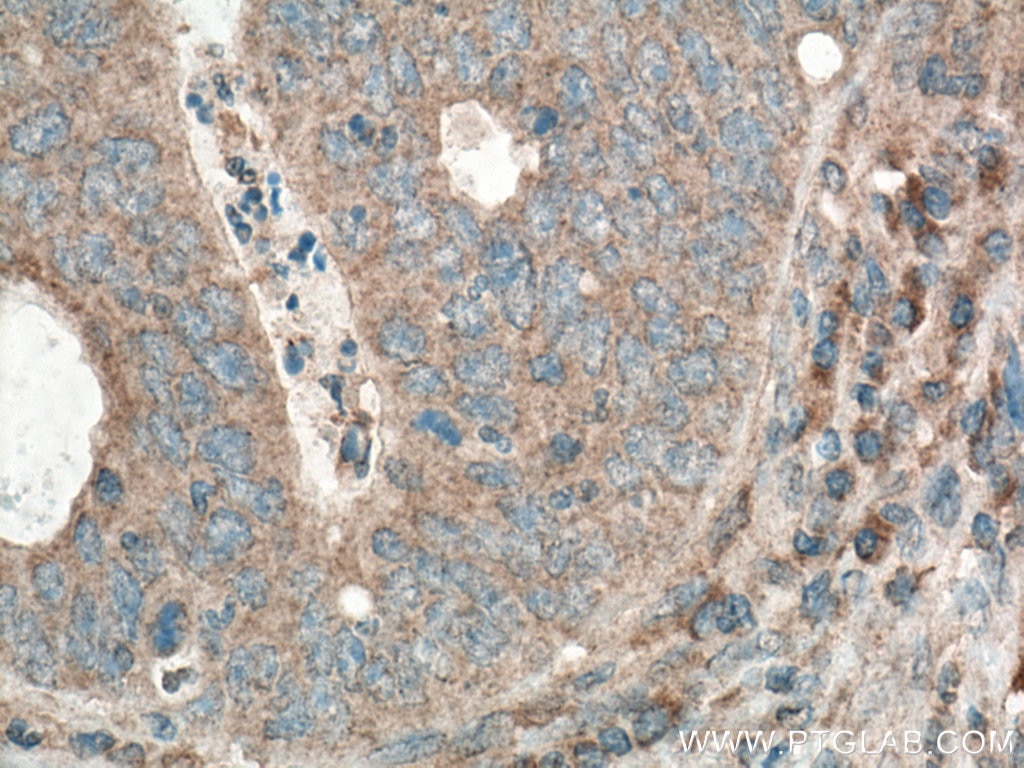Tested Applications
| Positive WB detected in | mouse brain tissue |
| Positive IHC detected in | human liver tissue, human colon cancer tissue Note: suggested antigen retrieval with TE buffer pH 9.0; (*) Alternatively, antigen retrieval may be performed with citrate buffer pH 6.0 |
Recommended dilution
| Application | Dilution |
|---|---|
| Western Blot (WB) | WB : 1:300-1:600 |
| Immunohistochemistry (IHC) | IHC : 1:50-1:500 |
| It is recommended that this reagent should be titrated in each testing system to obtain optimal results. | |
| Sample-dependent, Check data in validation data gallery. | |
Published Applications
| WB | See 23 publications below |
| IHC | See 3 publications below |
| IF | See 1 publications below |
Product Information
11865-1-AP targets ADAMTS4 in WB, IHC, IF, ELISA applications and shows reactivity with human, mouse samples.
| Tested Reactivity | human, mouse |
| Cited Reactivity | human, mouse, rat, pig |
| Host / Isotype | Rabbit / IgG |
| Class | Polyclonal |
| Type | Antibody |
| Immunogen | ADAMTS4 fusion protein Ag2443 Predict reactive species |
| Full Name | ADAM metallopeptidase with thrombospondin type 1 motif, 4 |
| Calculated Molecular Weight | 837 aa, 90 kDa |
| Observed Molecular Weight | 90 kDa |
| GenBank Accession Number | BC030812 |
| Gene Symbol | ADAMTS4 |
| Gene ID (NCBI) | 9507 |
| RRID | AB_2877799 |
| Conjugate | Unconjugated |
| Form | Liquid |
| Purification Method | Antigen affinity purification |
| UNIPROT ID | O75173 |
| Storage Buffer | PBS with 0.02% sodium azide and 50% glycerol, pH 7.3. |
| Storage Conditions | Store at -20°C. Stable for one year after shipment. Aliquoting is unnecessary for -20oC storage. 20ul sizes contain 0.1% BSA. |
Background Information
The ADAMTS (a disintegrin-like and metalloproteinase with thrombospondin motifs) is a family of extracellular metalloproteinases mediating diverse functions including matrix degradation, blood coagulation and angiogenesis. The ADAMTS family constitutes a group of proteins composed of 19 enzymes and 7 ADAMTS-like proteins. ADAMTS4 is a well-known proteoglycanase and has angiomodulatory properties. The 837 amino acid long human ADAMTS4 protein contains a long signal peptide, a prodomain, a metalloproteinase catalytic domain with zinc-binding motif, a disintegrin-like domain, a central TSR motif, followed by a cysteine-rich region with ten conserved cysteine residues, and a spacer domain. The full-length proform human ADAMTS4 (zymogen form) has been described to be 90 kDa. In extracellular matrix (ECM), ADAMTS4 undergoes further C-terminal cleavage at Lys694-Phe695 and Thr581-Phe582, respectively, to generate two other truncated forms-53 and 40 kDa (PMID:12202483).
Protocols
| Product Specific Protocols | |
|---|---|
| WB protocol for ADAMTS4 antibody 11865-1-AP | Download protocol |
| IHC protocol for ADAMTS4 antibody 11865-1-AP | Download protocol |
| Standard Protocols | |
|---|---|
| Click here to view our Standard Protocols |
Publications
| Species | Application | Title |
|---|---|---|
Adv Sci (Weinh) Mechanical Load-Induced Upregulation of Talin2 through Non-Canonical Deubiquitination of OTUB1 Drives Facet Joint Osteoarthritis Pathogenesis | ||
Adv Sci (Weinh) Inhibition of Heat Shock Protein 90β by Catalpol: A Potential Therapeutic Approach for Alleviating Inflammation-Induced Cartilage Injuries in Osteoarthritis | ||
Acta Biomater ROS-responsive magnesium-containing microspheres for antioxidative treatment of intervertebral disc degeneration | ||
Bone Joint Res Suramin attenuates intervertebral disc degeneration by inhibiting NF-κB signalling pathway. | ||
Mol Med Rep Acetyl zingerone ameliorates osteoarthritis by inhibiting chondrocyte programmed cell death | ||
Inflammation Simvastatin Inhibits IL-1β-Induced Apoptosis and Extracellular Matrix Degradation by Suppressing the NF-kB and MAPK Pathways in Nucleus Pulposus Cells. |
